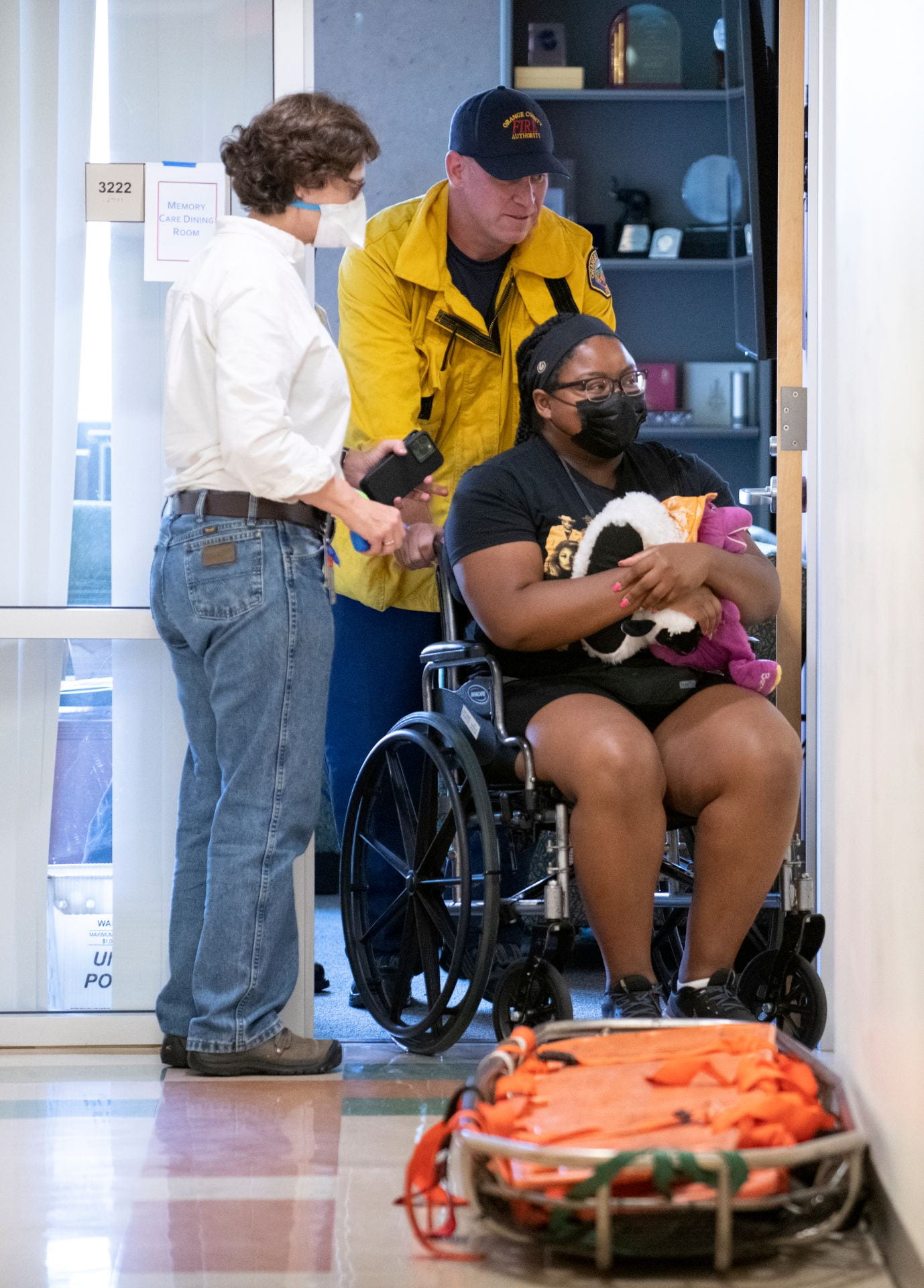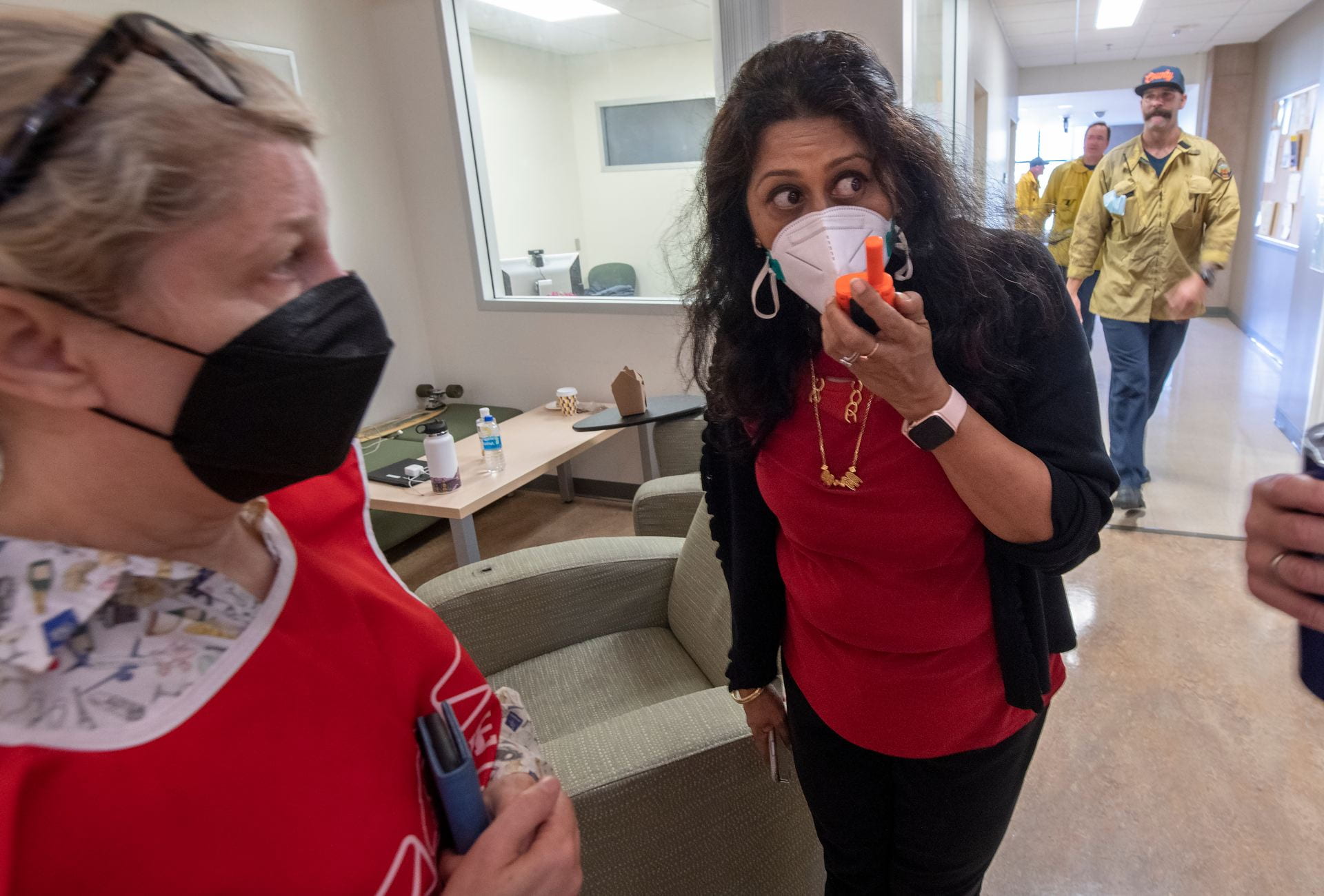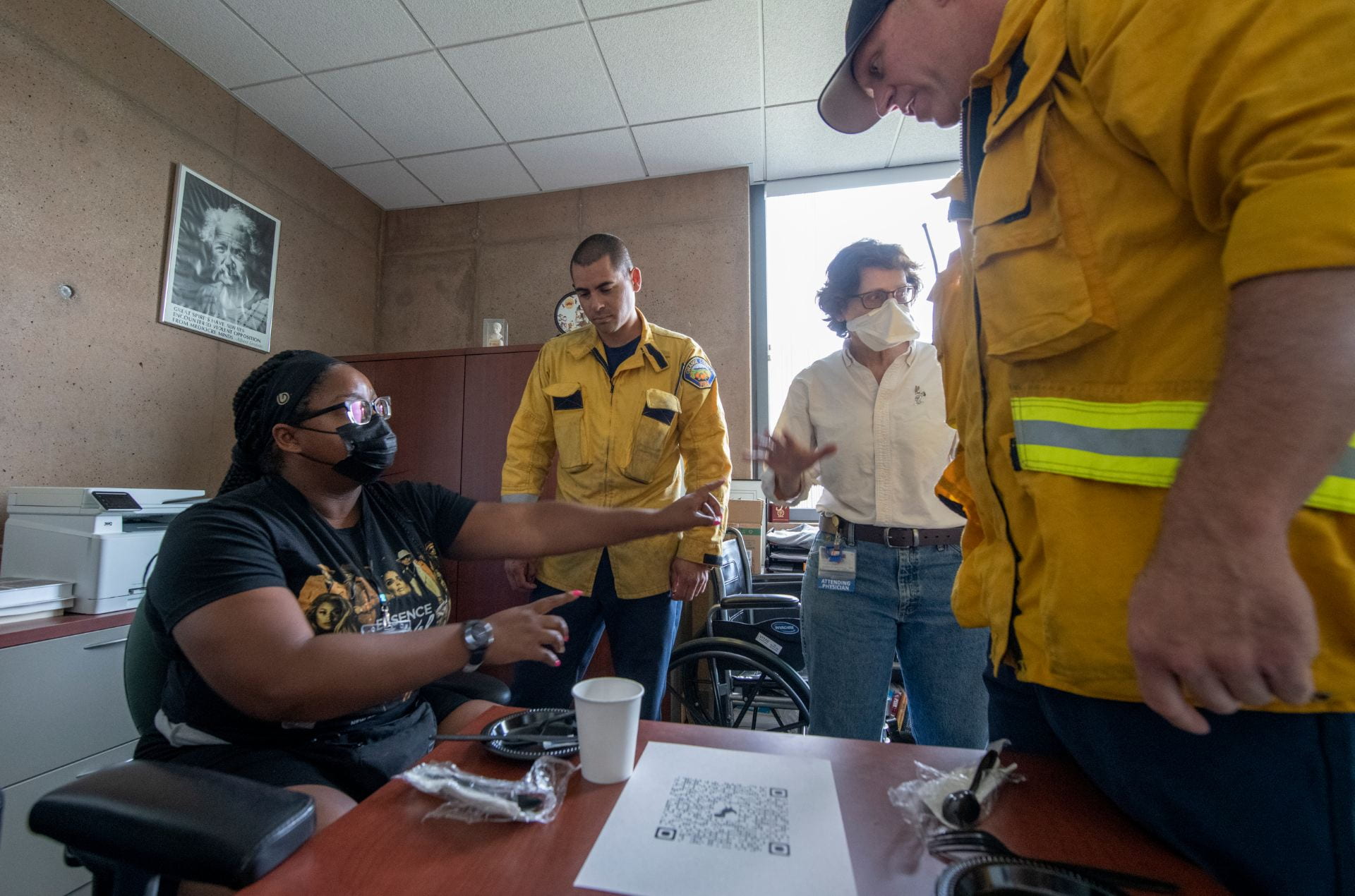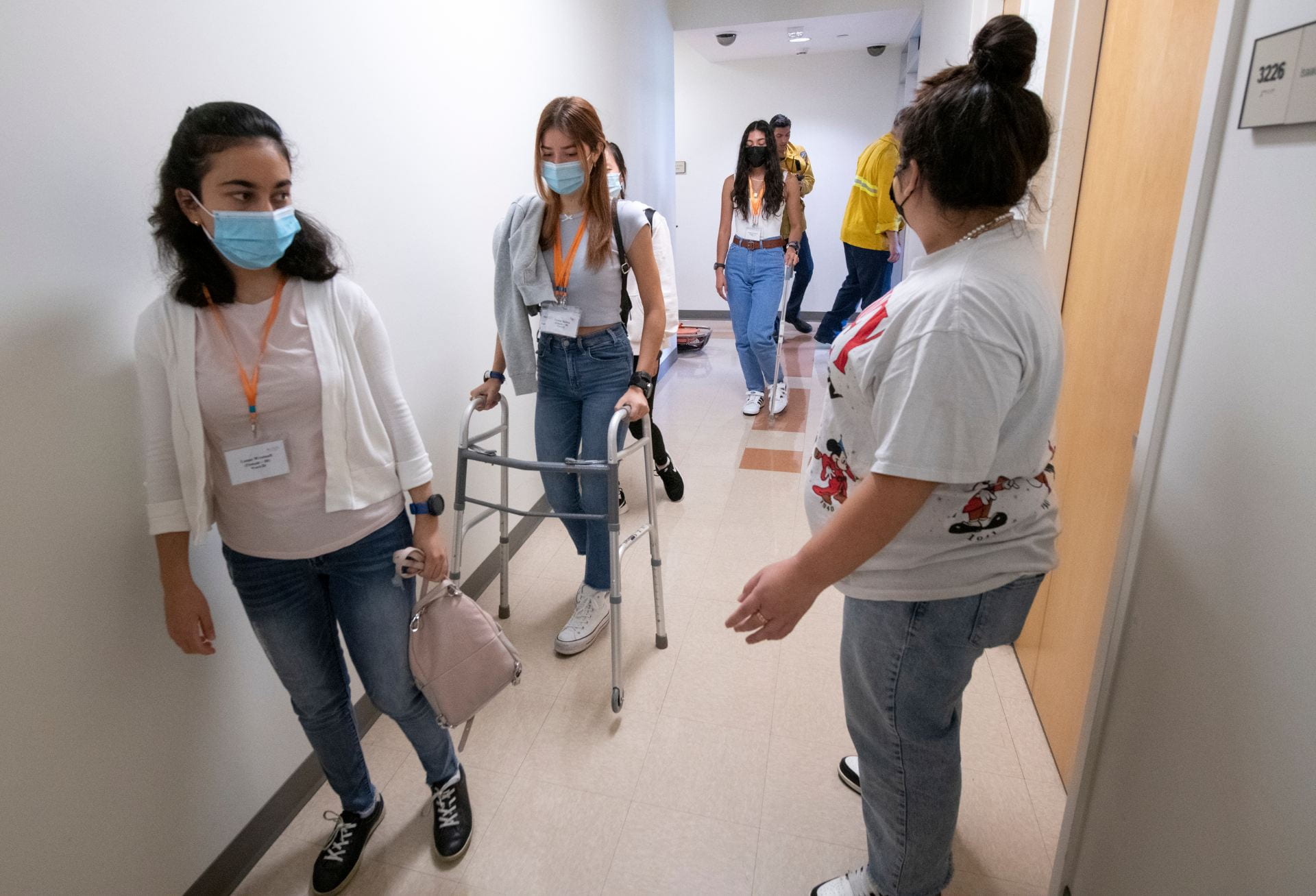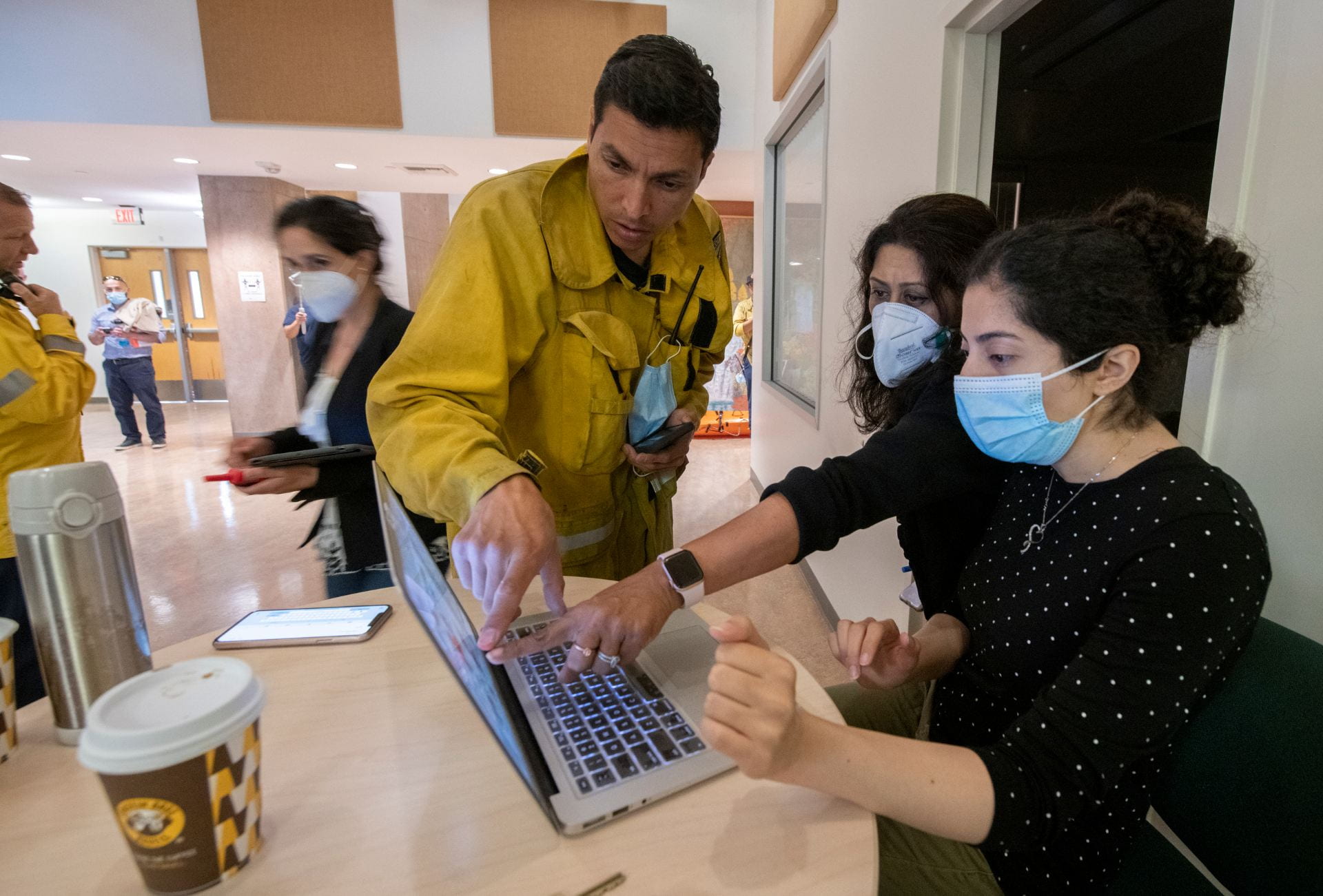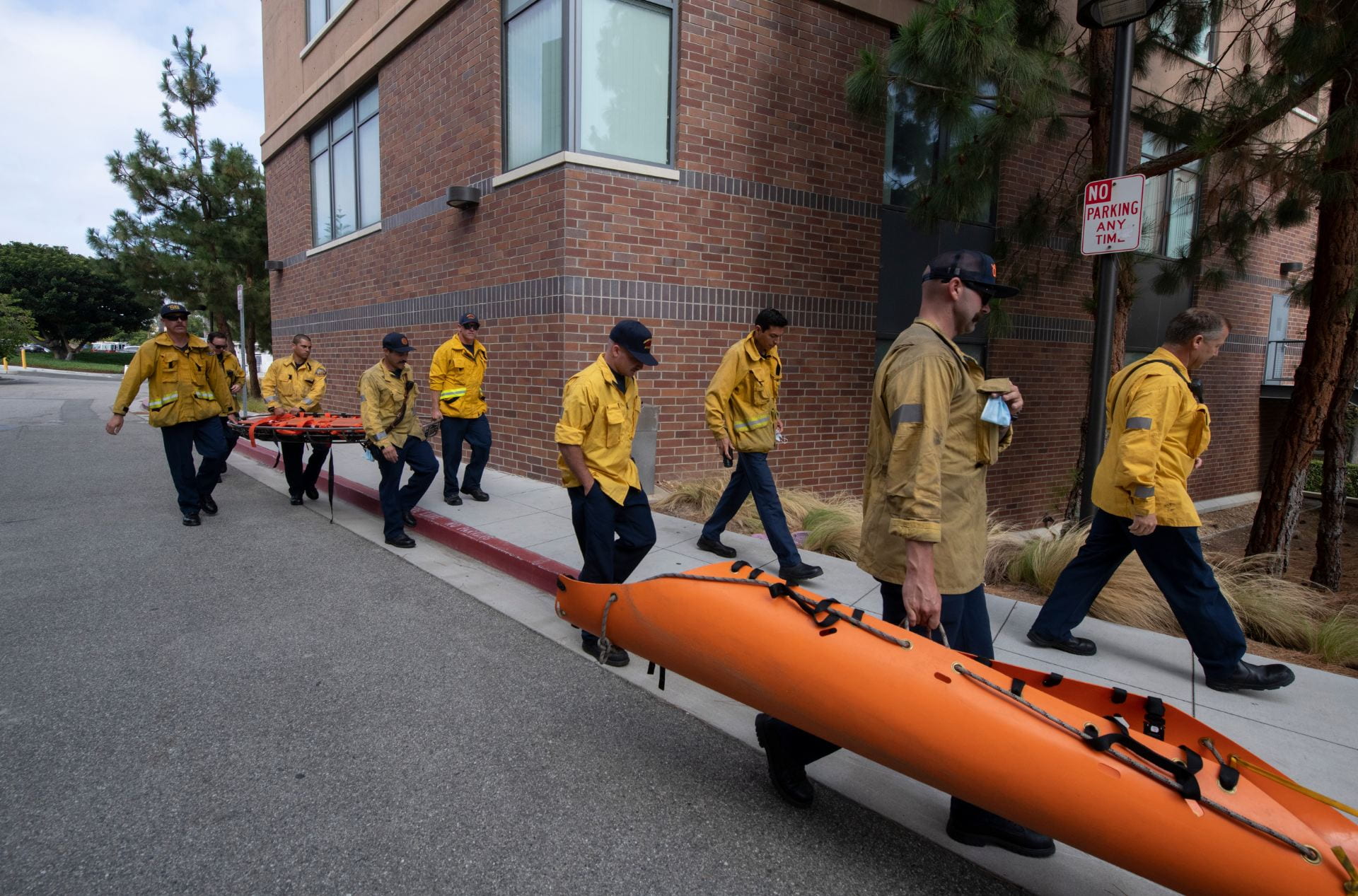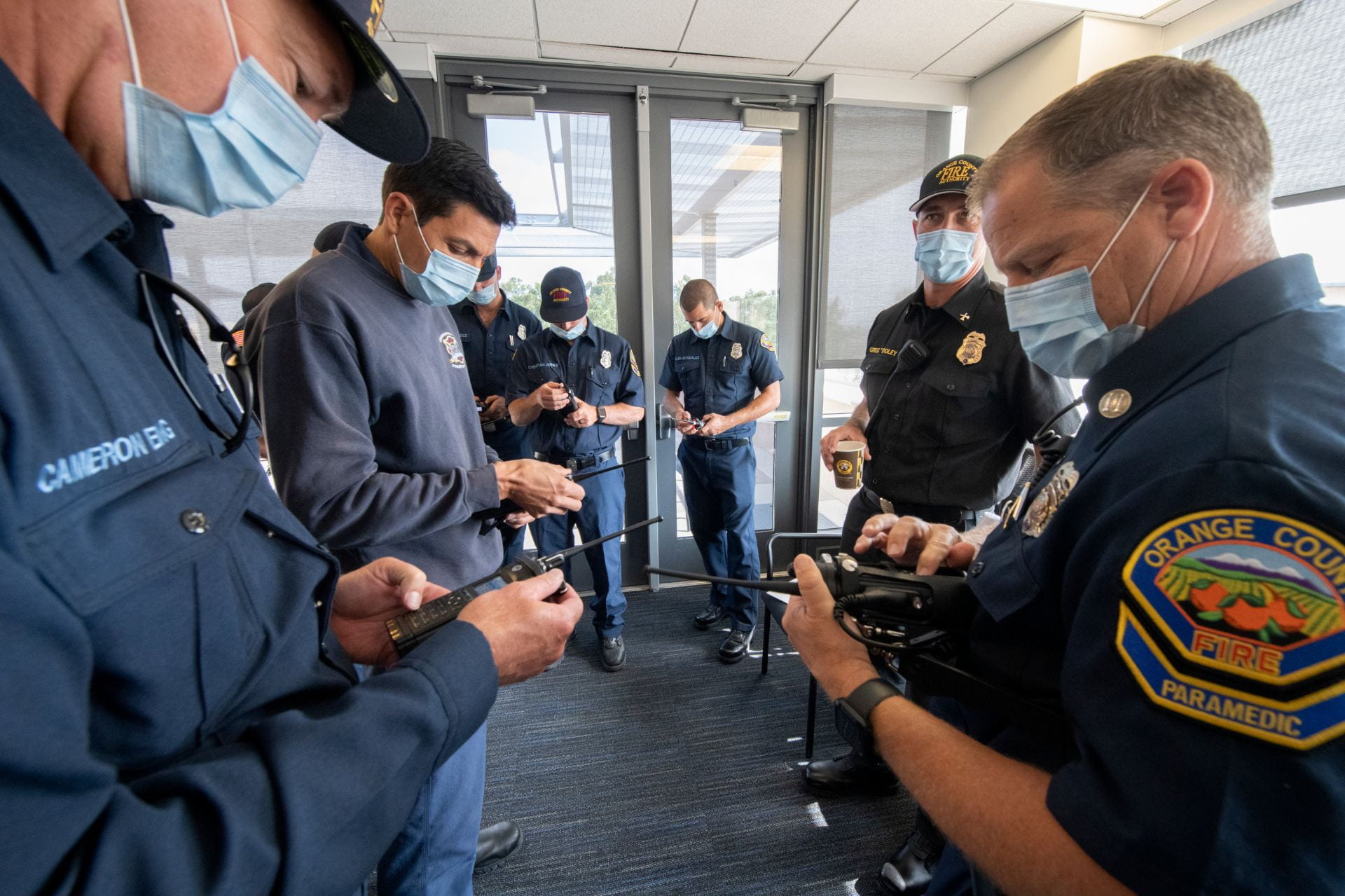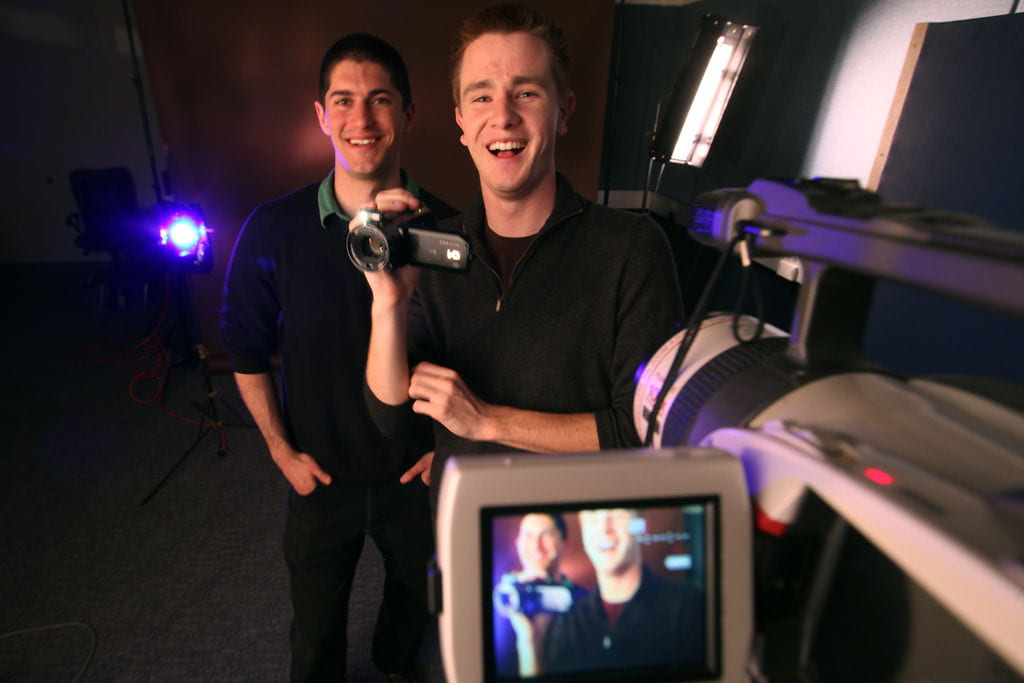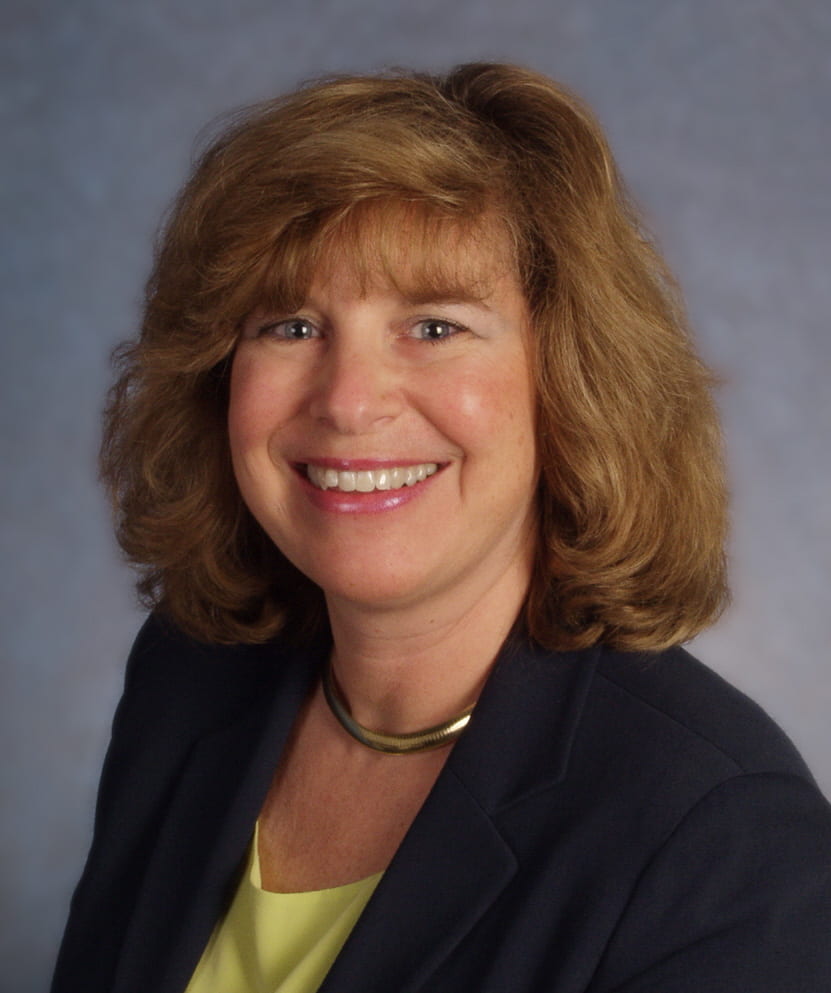Disaster drill aims to aid the elderly
NSF-funded CareDEX project tests Internet of Things technologies in mock emergency

Over the summer, researchers in UCI’s Donald Bren School of Information & Computer Sciences planned and carried out a unique disaster drill in which the main evacuees were residents of an elder care facility. A mock scenario simulated a multipronged situation involving an earthquake and fire unfolding during a global pandemic.
The exercise was held as part of UCI’s CareDEX project, a National Science Foundation-funded initiative devoted to enhancing disaster resilience in aging communities. A multidisciplinary team of CareDEX researchers led by Nalini Venkatasubramanian, UCI professor of computer science, is exploring the use of smart sensors, Internet of Things technologies and secure data exchange tools to provide extra help locating and evacuating older adults from residential care facilities during wildfires, earthquakes and other types of hazards.
Normally teeming with students and faculty during the school year, classrooms, offices and common spaces on the third floor of Donald Bren Hall were filled with first responders and their equipment for the late-July drill, with volunteer nursing, medical, pharmacy and public health students at UCI playing roles in the emergency scenario. Participants in the event came from the Bren School, UCI’s School of Medicine and School of Nursing, Cal Fire, UCI Environmental Health & Safety, the Fire Protection Research Foundation, the Orange County Fire Authority, Anaheim Emergency Management & Preparedness, Anaheim Fire & Rescue and the Irvine Fire Department.
A command post was established in a large conference room on the sixth floor of Bren Hall. Flat-screen monitors displayed real-time information as the drill progressed, and CareDEX researchers from UCI, Ball State University and ImageCat Inc. provided continuous updates. Staff and roughly 30 residents from the Walnut Village Retirement Community in Anaheim – which will be the site of the next CareDEX disaster exercise on Oct. 20 – were in attendance and provided substantial feedback during and after the drill.
“People living in elder care communities are often overlooked in the context of disasters, and there’s a lack of a system to provide accurate and actionable information to effectively conduct triage and provide comfort and care in an emergency,” Venkatasubramanian says. “With CareDEX, we hope to address some of these deficiencies through the development of smart-space platforms and tools to enable the rapid collection and exchange of customized care information among first responders, caregivers in senior housing facilities and older adults in a secure manner.”
The foundation of the technology used in CareDEX is an Internet of Things data management platform called Testbed for Internet of Things-Based Privacy-Preserving Pervasive Spaces. TIPPERS principal investigator Sharad Mehrotra, UCI Chancellor’s Professor of computer science, and Venkatasubramanian have been working together to develop the technology as part of a five-year, $5 million effort funded by the Defense Advanced Research Projects Agency. TIPPERS was used at the height of the COVID-19 pandemic, starting in the spring of 2020, to help track building occupancy, maintain social distancing and trace potential virus exposures on the UCI campus.
“We’re building on the COVID occupancy dashboards and technology and enhancing that with customized information about individuals to create this live digital twin of a senior care facility as the disaster is evolving,” Mehrotra says.
According to Venkatasubramanian, a retirement community like Walnut Village is a good test case for the system because each resident already carries a smart pendant that can be networked through the Internet of Things.
“If someone falls down or is hurt, they can press their pendant, and a signal gets sent into an in-house system,” she says. “CareDEX can ingest live reports about such injuries and enable secure sharing of this information among people who need to know: facility staff, first responders and medical personnel.”
Debbie Infield, executive director of the Walnut Village Retirement Community, sees an application for the CareDEX dashboard beyond disaster situations.
“This will be helpful in finding missing persons,” she says. “Ultimately, in an evacuation, we’re going to do what we need to do. We’re going to go into every single room, every common area, but this is going to tell us if we’ve missed somebody. This also happens in a nonemergency situation when we can’t find a resident, so I think it’s incredibly helpful.”
The developers envision CareDEX allowing the sharing of information about a resident’s health conditions and current mobility status, need for life-sustaining equipment, allergies to medicines and specialized care requirements – such as those for people with dementia or other memory impairments. The system also offers facility information like floor plans, number of residents and more, all of which can be useful to first responders rescuing people in an emergency.
Dr. Lisa Gibbs, chief of geriatric medicine and gerontology at UCI and CareDEX co-principal investigator, says that recent events such as Hurricane Ian causing so much destruction in southwest Florida demonstrate the pressing need for senior citizen-directed technologies. “If a disaster hits communities where many individuals move to during their retirement years, you’re bound to have situations in which these vulnerable people need some extra help,” she says.
From hurricanes in Florida to earthquakes and wildfires in California, older adults are disproportionately affected in disasters. “If seniors in these places have access to a system like CareDEX that can provide information preparedness, they have a much better chance of survival in a time of emergency,” Venkatasubramanian says.
She says the July drill was a success in that it demonstrated how diverse groups – first responders, academic researchers, students and senior citizens – can come together in a focused effort to solve a problem, and she expects future exercises will advance the CareDEX approach even more.
In fact, the researchers will get another chance to test the system on Oct. 20 at Walnut Village. A full-scale drill using the CareDEX platform as part of the Great California ShakeOut will take place there at midmorning. Participants include the city of Anaheim, Anaheim Fire & Rescue, Walnut Village staff and residents, the Front Porch Center for Innovation and Wellbeing (a national senior care nonprofit), and personnel from the California Governor’s Office of Emergency Services and the Federal Emergency Management Agency.
